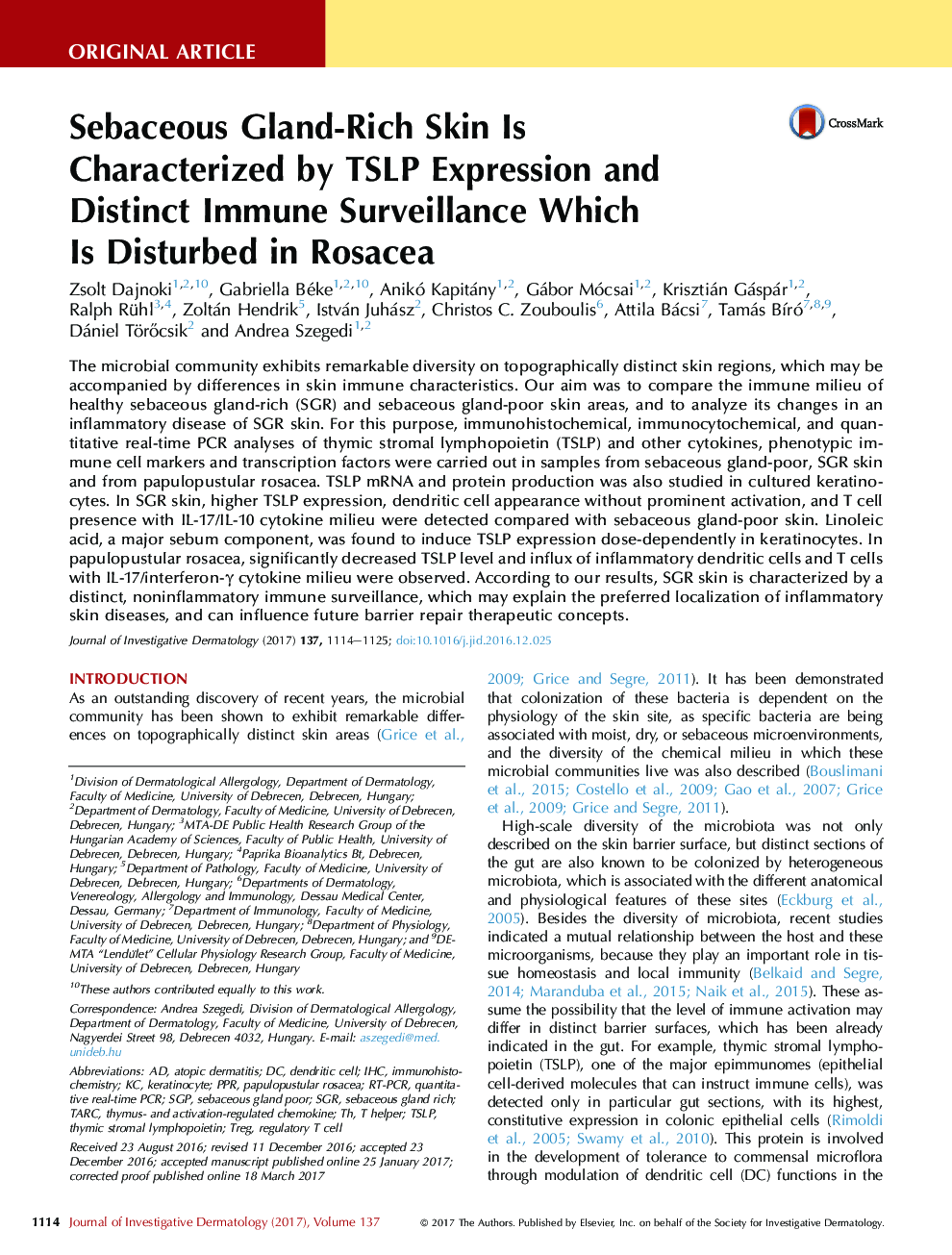| Article ID | Journal | Published Year | Pages | File Type |
|---|---|---|---|---|
| 5649518 | Journal of Investigative Dermatology | 2017 | 12 Pages |
Abstract
The microbial community exhibits remarkable diversity on topographically distinct skin regions, which may be accompanied by differences in skin immune characteristics. Our aim was to compare the immune milieu of healthy sebaceous gland-rich (SGR) and sebaceous gland-poor skin areas, and to analyze its changes in an inflammatory disease of SGR skin. For this purpose, immunohistochemical, immunocytochemical, and quantitative real-time PCR analyses of thymic stromal lymphopoietin (TSLP) and other cytokines, phenotypic immune cell markers and transcription factors were carried out in samples from sebaceous gland-poor, SGR skin and from papulopustular rosacea. TSLP mRNA and protein production was also studied in cultured keratinocytes. In SGR skin, higher TSLP expression, dendritic cell appearance without prominent activation, and T cell presence with IL-17/IL-10 cytokine milieu were detected compared with sebaceous gland-poor skin. Linoleic acid, a major sebum component, was found to induce TSLP expression dose-dependently in keratinocytes. In papulopustular rosacea, significantly decreased TSLP level and influx of inflammatory dendritic cells and T cells with IL-17/interferon-γ cytokine milieu were observed. According to our results, SGR skin is characterized by a distinct, noninflammatory immune surveillance, which may explain the preferred localization of inflammatory skin diseases, and can influence future barrier repair therapeutic concepts.
Keywords
Related Topics
Health Sciences
Medicine and Dentistry
Dermatology
Authors
Zsolt Dajnoki, Gabriella Béke, Anikó Kapitány, Gábor Mócsai, Krisztián Gáspár, Ralph Rühl, Zoltán Hendrik, István Juhász, Christos C. Zouboulis, Attila Bácsi, Tamás BÃró, Dániel TörÅcsik, Andrea Szegedi,
